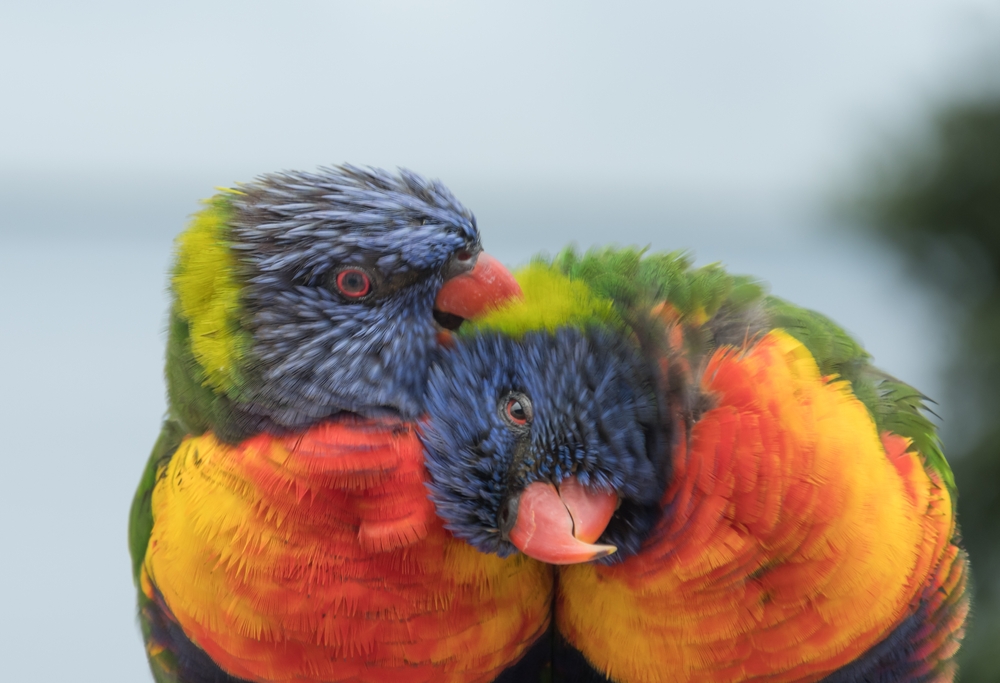A study of five common Australian bird species in southeast Queensland has found on average, 4.8 percent of them have sexual organs that don’t align with their chromosomes. The authors don’t know the cause of the deviation from biology textbooks, nor how representative the findings are for avian populations elsewhere, but it does appear to be more common than thought in wild birds.
Birds usually determine sex through a ZW chromosome system. Instead of two XX chromosomes making a female and XY making a male, as in most mammals, ZZ birds are male and ZW birds are female, or at least that is what aspiring biologists learn.
Just as multiple exceptions exist in humans in the form of Swyer and de la Chapelle syndromes, birds have been identified with a mismatch known as “sex reversal”. However, Dr Dominique Potvin of the University of the Sunshine Coast told IFLScience, these have usually been recorded in the form of anecdotes. The only systematic studies Potvin and her former student, Dr Clancy Hall, could find were on chickens, whose years of domestication make them highly unrepresentative of wild birds, and one on the plumage of a species of duck. The latter reported rates of sexual reversal below 1 percent, but also looked at only certain characteristics.
Hall and Potvin weren’t looking to shake up avian sex chromosome research when they conducted their study. Instead, Hall, who is doing her PhD on captive breeding programs for endangered species, wanted to check whether genetic tests could be relied on for breeding purposes. “We often find really biased sex ratios [in breeding populations],” Potvin told IFLScience. “With only a few females and a lot of males, it hampers efforts to breed them back in a healthy way.” Being able to tell the future sex of a bird before it hatches could help a lot, but if genetic tests aren’t accurate, they could do more harm than good.
The authors looked for the sexual characteristics of injured birds brought into wildlife hospitals and tested their genetics. The five species chosen, kookaburras, magpies, crested pigeons, and two lorikeets, all have males and females that look alike, so the authors were examining their gonads and other reproductive organs, rather than basing the assessment on external features like feather colors.

Rainbow lorikeets are the most colorful of the five species in the sample.
Image credit: Warren Lloyd/Shutterstock.com
Out of 496 birds, 24 showed sex reversal. Of these, 22 were ZW but had gonads that meant they could theoretically father offspring, although the authors don’t know if any had. One of the two ZZ females, a kookaburra, however, had a distended oviduct, a sure sign of having recently laid an egg. Whether the egg would have hatched had its mother not died is unknown.
“This indicates that sex determination in wild birds is more fluid than we thought – and can persist into adulthood,” Potvin said in a statement.
“The ability to unequivocally identify the sex and reproductive status of individuals is crucial across many fields of study,” Hall said. “We’ve now established that DNA evidence does not always reflect the suspected sex.” The team didn’t find any examples of mixed sexual characteristics, but we know it happens.
Potvin told IFLScience there is a great deal more the authors would like to study. Although such mismatches can occur naturally, they don’t know if the high proportion is natural or a product of some human influence, such as the release of hormones or endocrine-disrupting chemicals into the environment.
The consistency across species, ranging from 4.0 to 6.9 percent, may be evidence against the latter explanation, since differing diets would expose some to more human products than others. Potvin also noted there was no visible pattern to where the mismatched birds came from. “It’s not that all the sex reversed birds came from the water treatment plant, for example,” she told IFLScience.
The authors acknowledge that the sample group may not be perfectly representative. Most of the birds brought in had been hit by cars, and if the sex reversal affects their sense of danger or flying capacity, that might skew the sample. However, they could see no evidence for this.
Other questions the authors would like to explore are whether mismatches affect reproductive success rates. “This was the breeding season and they appear to have functioning gonads,” Potvin told IFLScience, “And we know it is possible [for these birds to breed]. Whether they do so at the same rate as their counterparts is the uncertain part.” For example, the team would like to know if sex reversed birds sing or engage in other courting behavior at normal rates.
Sadly, Potvin noted the team didn’t even have the funding to preserve the brains of those that did not survive their accidents for future investigation. If they do get a grant for further research, they’ll need to start collecting specimens again.
Others will need to investigate whether other continents’ birds have similar rates of sexual mismatch, but given the evolutionary distance between the species in this study, that might be expected.
Potvin admitted to some surprise to have been the first to investigate the question in this way, noting there are “Lots of studies of the triggers on chromosomes that can lead to mismatches.” It’s known that sex reversal can occur before hatching or during adolescence, but the nature of the study meant the authors could not determine which was responsible for the birds they examined.
Although their focus is birds, Potvin told IFLScience they could find no equivalent studies on wild mammals, although the frequency of sex reversal in farm animals has been the subject of several studies.
The study is published in Biology Letters.
Source Link: World-First Study Finds “Sex Reversal” Surprisingly Common In Wild Australian Birds